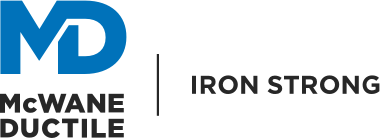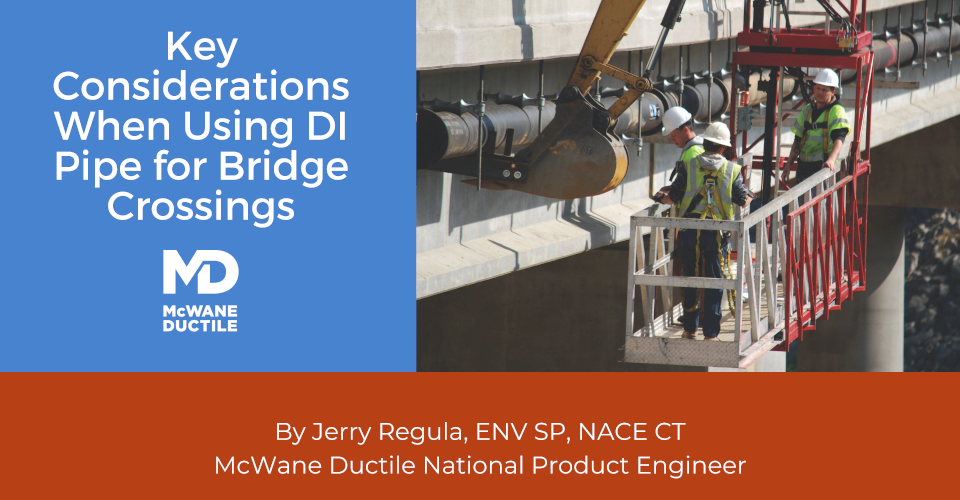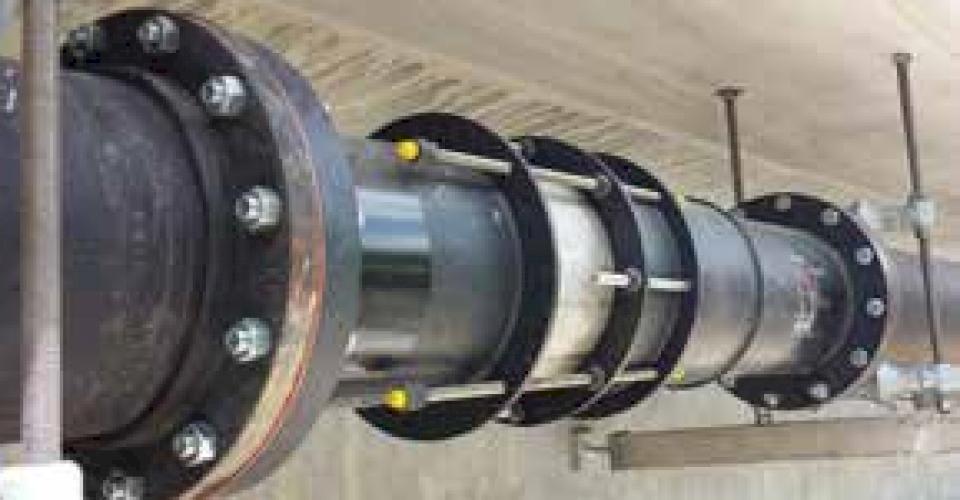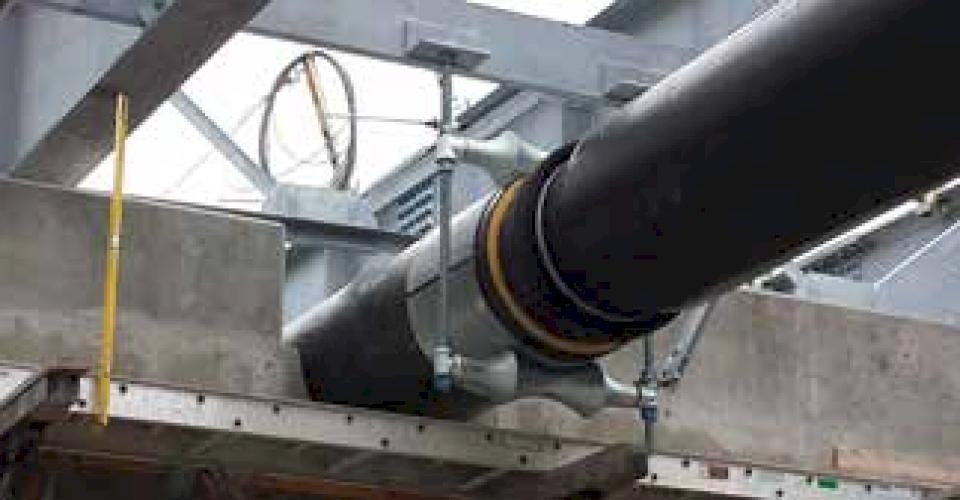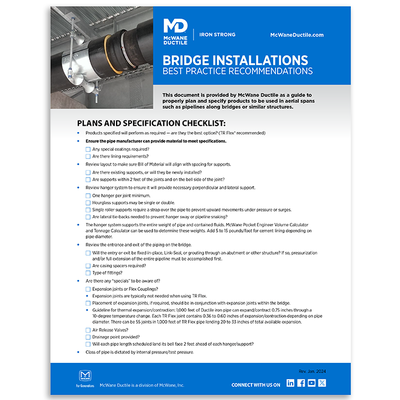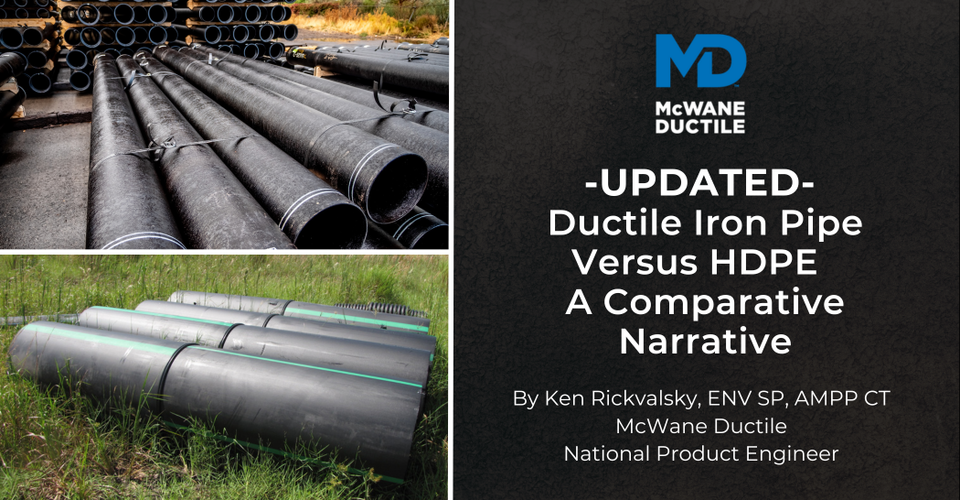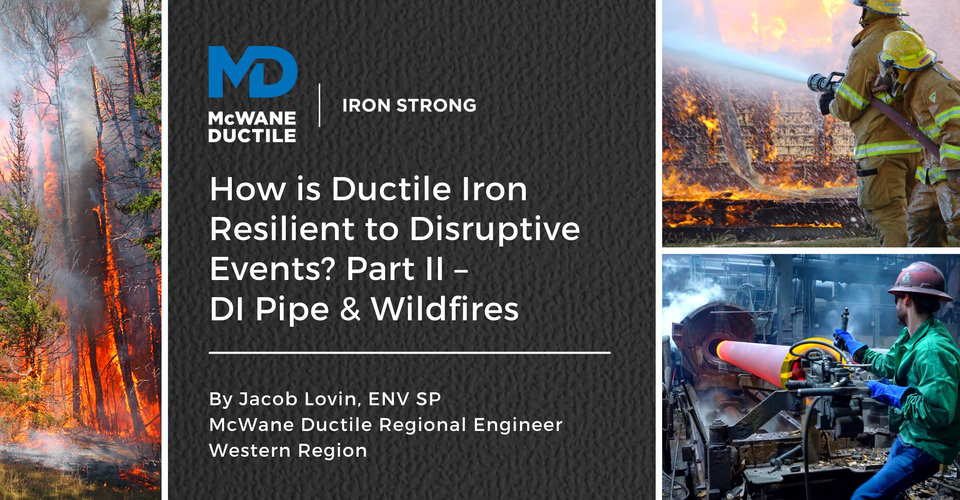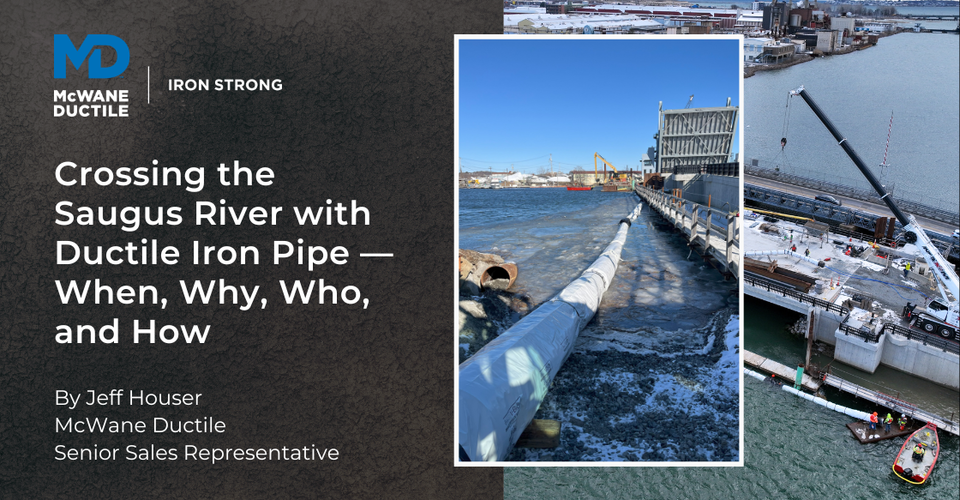Bridge crossings, like many projects, can go extremely well with the proper upfront considerations. We will discuss the benefits of utilizing TR Flex® Ductile iron pipe, and take a look at key topics involved in completing bridge crossing projects.
Let’s imagine that we are tasked with crossing a bridge with our water or sewer line. From the Envision™ perspective, we may first ask: “Are we using the right application for the project? Has consideration been given to make the crossing using River Crossing pipe or Horizontal Directional Drilling (HDD) with TR Flex pipe?“ For this article, we will assume that these options have been examined and that the most effective way to complete the project is to install the piping on the bridge.
Also, considerations for the size and class of pipe have been determined based on flow rates and internal pressures. So, what type of pipe joint do we select? There are many benefits to utilizing the TR Flex joint in this particular application.
Bridge Crossing Pipe Joint Selection
First, let us understand that the TR Flex joint is actually a restrained Tyton® joint. The flexibility of the joint, for example, is superior to that of a Mechanical Joint, especially in terms of thermal expansion and contraction. The bolt-less connection is easy to install and is restrained when each joint is extended and engages the locking segments. This brings us to the first question that I often receive:
“How does one install the joint on a bridge and then pull back to lock the restraint?”
- Simply use a come-a-long to make the joint.
- Then tie off to the next secure structure.
- Pull back on the joint, which locks the restraint.
- This process should be repeated at each joint, helping keep the pipe joints in line with the hangers and supports.
Interestingly, in all my years, I have yet to witness someone displacing a gasket when a come-a-long is used to make the joint. The ease of installation and flexibility of the joint is far superior to alternative products that may require welded joints or are subject to atmospheric or ultraviolet conditions.
Another common question that we receive is: “If the Tyton joint is flexible, why not use restraining gaskets vs. a restrained joint for bridge applications?” TR Flex joints are not subject to vibrations to the degree that restraint gaskets are. Therefore, using restraining gaskets on a bridge is like turning a beaver on steroids loose at a wood chopping convention.
Pipe Joint Expansion and Contraction Considerations
The expansion and contraction of the joint may be sufficient for the project. However, there may be cases where the use of additional expansion joints is warranted. Temperature is an obvious factor. Some areas, for instance, may experience temperatures above 100 degrees Fahrenheit.
The coefficient of thermal expansion differences between materials (Bridge: concrete and or steel; Pipe: ductile iron) becomes an increasingly important factor as the temperature differences increase. Also, bridge length becomes a more integral component as the bridge's length increases, and expansion joints are designed within the bridge.
For example, let’s assume that two 5-inch expansion joints are within the bridge design. The installation of corresponding expansion joints within the pipeline may be foreseeable. Expansion joints may also include maintenance, which should also be considered when determining the location. For reference, the coefficient of linear expansion for Ductile iron pipe (DI pipe) is 0.740 inches per 1000 feet of pipe for every 10 degrees Fahrenheit temperature change.
Bridge and Supports
Consideration must also be made regarding various aspects of the bridge design in question. Examples include:
- Length
- Angle
- Material
The length was previously discussed regarding expansion. Consideration for the angle is important to ensure that the joints' deflection is sufficient to match that of the bridge.
McWane Ductile iron pipe is provided in 18-foot nominal lengths. A benefit of 18-foot versus 20-foot lengths is that the 18-foot lengths provide an opportunity to achieve a tighter radius, which is also a plus for HDD applications. An air release may be installed if there is a vertical radius with a high point within the pipe on the bridge.
Pipe Bridge Support Material
The material (steel or concrete) used to construct the bridge is an especially important factor when considering how the pipe is supported. Supports are only as good as the anchors which hold them in place. Also, the total weight of the pipe, including the fluid, must be considered. Vertical and lateral support is crucial, as well.
A key factor in the support system is for the pipe to be totally independent of the bridge. Keep in mind the varying degrees of expansion and contraction of the pipeline and the bridge. Hourglass rollers are a good recommendation to allow axial movement. Hourglass rollers or supports should be designed with a minimum angle of 90 degrees and a maximum of 120 degrees. The angle of support will provide longitudinal support and prevent “snaking” of the joints. See the photo below of double hourglass rollers with vertical and lateral support:
Installing piping on a bridge, aerial crossing, or similar structure? Be sure to plan and specify the right products for the job with McWane Ductile’s free bridge installation checklist!
Bolts located on the supports should not be over tightened. Over tightening may cause deformation of the pipe and increase the potential for leaks. One support per joint is a minimum requirement. Additional supports may be necessary for large diameter pipe. Pipe length is also important in conjunction with support lay-out. McWane's Ductile's TR Flex pipe is provided in 18-foot nominal lengths. Specific laying lengths should be ordered to provide the correct length to correspond with the hanger system.
It is also recommended to specify the labeling of the bridge pipe to ensure that the pipe will be used in the proper location. For example, you do not want to have an expensive crane in place only to find out that the bridge pipe was accidentally installed underground in the approach.
Transitioning From Bridge to Underground
There are key factors to consider during the transition from the exposed bridge piping to the buried pipeline. The best-case scenario would be a straight line protruding through the abutment. A casing generally is recommended through the abutment. Ensure that the Inside Diameter (ID) of the casing is adequate space for the Outside Diameter (OD) of the bell. This information can be found on the McWane Ductile website under Resources - Submittal Sheets. TR Flex® fittings and/or Mechanical Joint fittings are available to transition from bridge to underground. An effort to minimize angles in the line will most definitely reduce the amount of thrust restraint required.
In most cases, there are no special requirements for coating the pipe. Ultraviolet rays or varying temperatures do not affect the Ductile iron. Temperature, however, may affect the fluid within the pipe. Consequently, insulation may be required to prevent the freezing of fluids, particularly in cases of low movement or periodic use of the line.
Cable bond connectors may be installed to provide electrical conductivity. In this case, an electrical source is certainly required. A common misconception is that the metal to metal contact of the TR Flex joint is sufficient for electrical conductivity. In reality, this is not the case. The TR Flex joint is not electrically continuous or bonded and is not adequate for electrical thawing or cathodic protection. A drainage tap may also be installed to remove fluids during a non-use time period. Lining requirements do not change from underground to bridge crossing applications.
Corrosion consideration may be advisable during the transition from the bridge to underground. V-Bio® Polyethylene Encasement is typically suggested. However, each project should be evaluated on an individual basis. It is important to remember that all materials are subject to varying corrosion types and that there is no “one size fits all” solution.
Summary
Numerous facets involved in a bridge crossing have been discussed. Keep in mind that there may be additional items to consider. We encourage you to contact your local Sales Representative or one of our Product Engineers. Either or both will be glad to assist with the design, facilitation, and completion of your project. We at McWane Ductile are Building Iron Strong Utilities for Generations!
Need Assistance With Your Water Infrastructure Project?
McWane Ductile offers multiple services for our customers extending far beyond manufacturing ductile iron pipe. From design to installation, we take great pride in providing education and assistance to water professionals throughout the water and wastewater industry.
